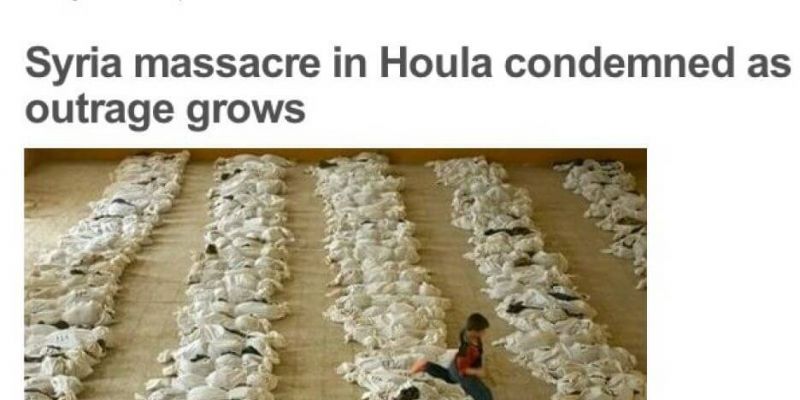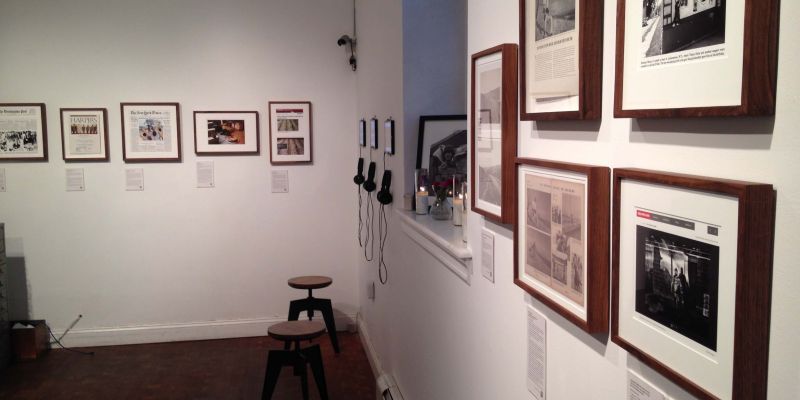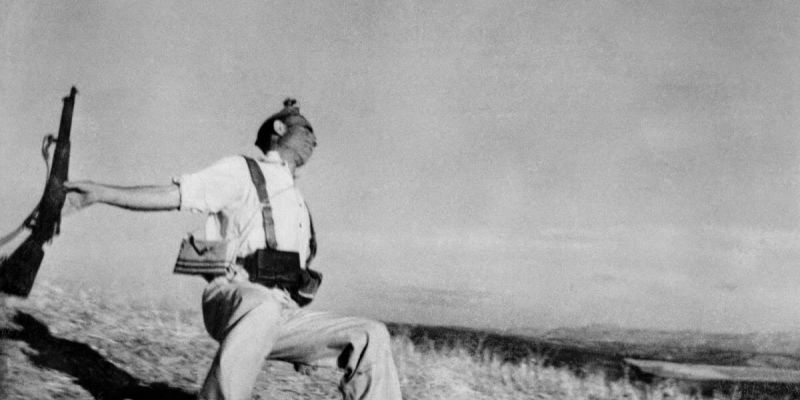Review: Holding the Line: Altered Images: 150 Years of Posed and Manipulated Documentary Photography at the Bronx Documentary Center
According to various news sources, in 2011 and 2014 then-host of Comedy Central’s The Daily Show with Jon Stewart met with President Obama at the White House. But why are Stewart’s previously unreported visits newsworthy? Stewart is a comedian, and The Daily Show is a satirical broadcast. However, the host’s influential presence in public discourse cannot be denied. He is even credited with impacting governmental policy. For instance, three days after he interviewed 9-11 first responders, Congress passed a filibustered bill to aid responders whose service resulted in chronic illness. Politico also reported that White House aides were advised to field calls from Stewart’s staff. Did the comedian’s relationship with Obama’s administration compromise journalistic integrity? If Stewart was a news broadcaster, the answer more likely could be yes. Because he is a comedian, no matter how astutely he engages with current events, the answer remains more nebulous.
Photography maintains a similarly imprecise relationship to journalistic ethics. If the aim is to use images to impact public discourse, photographic illustrations and staged compositions can communicate some content as adeptly as photojournalism can. But Altered Images: 150 Years of Posed and Manipulated Documentary Photography, a recent exhibition at the Bronx Documentary Center (BDC), tried to hold the line regarding what constitutes proper documentary practices. The exhibition declared, “Documentary photographs and photojournalism must be accurate representations of the scene before the photographer’s camera—without alteration. If the public is to have faith in the integrity of the image before them, and by extension the media, images must be taken and published in a forthright manner.” However, after viewing the exhibition, it remains difficult to maintain a definitive boundary between those documentary practices deemed as accurate or forthright and those not.
Altered Images culled together forty photographs from the medium’s history. Co-curated by photojournalist and BDC founder Michael Kamber and Gallery Manager Bianca Farrow, the show categorized alterations under three labels: staging, post-production, and captions. Staging included Roger Fenton’s much-studied 1855 The Valley of the Shadow of Death, Crimea, Ukraine and Chris Arnade’s 2015 image of a South Bronx sex worker exposing her breasts. The analog removal of Nikolai Yezhov, chief of Soviet secret police, from a 1930s photograph after he fell out of Joseph Stalin’s favor and Matt Mahurin’s darkening of O.J. Simpson’s mugshot for a 1994 cover of Time demonstrated post-production modifications. And in 2007, Newsweek deceptively captioned one of Balazs Gardi’s photographs from Afghanistan. A man holds a boy who was wounded during a U.S. airstrike, yet the magazine inaccurately implied that a suicide bomber caused the boy’s injuries. For each example, wall text described the “representation” vis-à-vis the “reality.”
Photographs have been altered over the course of the medium’s history, so why is this show important now? Altered Images framed the contemporary moment as one with a “crisis of credibility.” Kamber associates this crisis with a generational shift; he posits that younger photographers are more comfortable altering images with newer technologies and have not been taught about the problems of distributing altered images in documentary contexts. The exhibition, the BDC’s mission, and the organization’s array of classes and other programs attempt to combat this crisis.
If dodging and burning were acceptable ways to enhance earlier photographs, can a photographer use digital technologies to alter the light levels in the frame? Adjust the colors or contrast? Crop an image? BDC’s exhibition presented photographs that have been altered, most by unacceptable means or in ways that greatly impact the content of the images. But where to draw the line between acceptable enhancement and unacceptable alteration remains somewhat unclear as evidenced by the contradictions that arose from the exhibit.
For example, the back corner of the gallery contained video interviews with a range of experts. Charles Johnson, founder of the weblog Little Green Footballs, spotted and reported numerous cases of photo-manipulation in recent press photographs. In his interview, he chides Iran, North Korea, and Russia for using manipulated images as propaganda. He advises that, overall, we should trust “more reputable” periodicals like The New York Times and The Washington Post, sources that he claims would not deliberately publish altered images. But if he could have looked out from the screen that presented his talking head in the gallery, he would have seen the May 1, 2003, The New York Times hanging nearby. J. Scott Applewhite’s front-page “Mission Accomplished” image of George W. Bush shows that the U.S. government also choreographs photo opportunities, and a “reputable” source distributed this image. Such contradictions in the exhibition are productive. They force us to examine the bounds of our own acceptance of photographic alterations.
It is also worthwhile to note the exhibition’s uneven approach to physical objects. The gallery display presented some “original” images as they would have been distributed, such Time’s cover image of Simpson. Many other examples appeared as matted and framed color printouts. Because the exhibition focused on the alteration of photographs more than the images’ materiality, the inclusion of color copies did not deter from the show’s aims. Presenting various formats also allowed the BDC to create their own. A few examples hung in transparent layers; viewers could separate the alteration from the image’s original appearance. The BDC also posted an online version of the exhibition complete with images, exhibition text, and videos to continue the discussion beyond the end of the exhibit’s gallery run.
While Altered Images presents numerous alterations that have been deemed unacceptable within journalism, it also highlights the difficulty of defining what is allowable. There remains a place for constructed illustrations to impact public discourse, just as Stewart’s commentary shaped recent discussions. And photojournalists make many decisions about formal concerns that impact viewers’ understandings of what was in front of the camera. But we can thank the BDC for revealing a range of alterations to unknowing viewers and for raising questions about the manipulation of photographs, even if the judgment of “accuracy,” or the line between illustrative and documentary, may not be as clear as it sometimes should be.
Exhibit information:
Altered Images: 150 Years of Posed and Manipulated Documentary Photography
Bronx Documentary Center
20 June – 2 August 2015
Available online at: http://www.alteredimagesbdc.org/
 Corey Dzenko earned her Ph.D. in the History of Photography from the University of New Mexico. Her research interests include the intersections of photography, performance, and new media; art as an agent of social change; and the ideologies of identity. She has presented in numerous national and international conferences, has published in sources including Afterimage: The Journal of Media and Cultural Criticism and the anthology Gravity in Art, and was a 2014 Visiting Fellow at the University of Nottingham. Currently, she is an Assistant Professor of Art History at Monmouth University in New Jersey.
Corey Dzenko earned her Ph.D. in the History of Photography from the University of New Mexico. Her research interests include the intersections of photography, performance, and new media; art as an agent of social change; and the ideologies of identity. She has presented in numerous national and international conferences, has published in sources including Afterimage: The Journal of Media and Cultural Criticism and the anthology Gravity in Art, and was a 2014 Visiting Fellow at the University of Nottingham. Currently, she is an Assistant Professor of Art History at Monmouth University in New Jersey.



